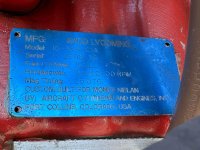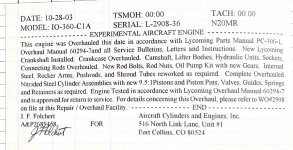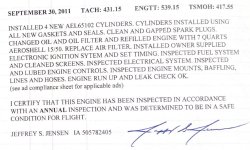ronrapp
Well Known Member
My IO-360 has a data plate on it which says it's 195 hp, but does not list the compression ratio. I read the "Piston/compression/fuel combinations for O-360 and O-320" sticky post but did not see any combination that resulted in 195 hp.
Can anyone help me with the compression ratio? I see 9.7:1 on threads sometimes, and am guessing I'm somewhere in that range, but I don't know the math.
I'm interested in that data because sometimes I look at CS props and things and often find compression ratio limitations.
For what it's worth, I contacted Aircraft Cylinders & Engines to ask if they could provide me any information on the engine, since I didn't build the plane, and the reply was simply "No."
--Ron
Can anyone help me with the compression ratio? I see 9.7:1 on threads sometimes, and am guessing I'm somewhere in that range, but I don't know the math.
I'm interested in that data because sometimes I look at CS props and things and often find compression ratio limitations.
For what it's worth, I contacted Aircraft Cylinders & Engines to ask if they could provide me any information on the engine, since I didn't build the plane, and the reply was simply "No."
--Ron







